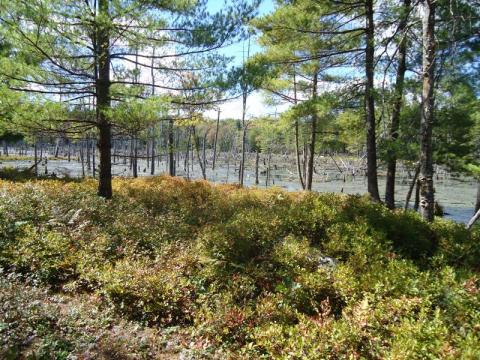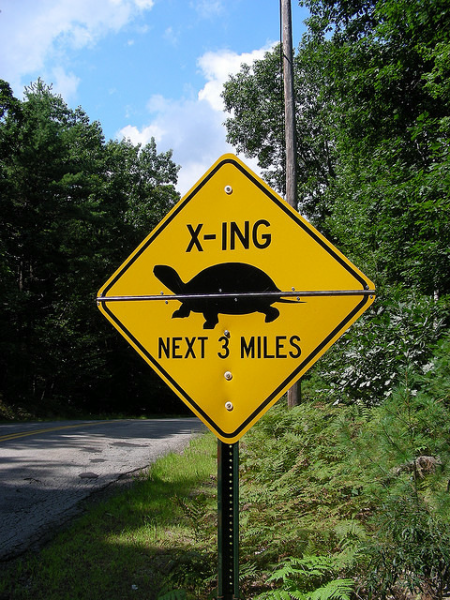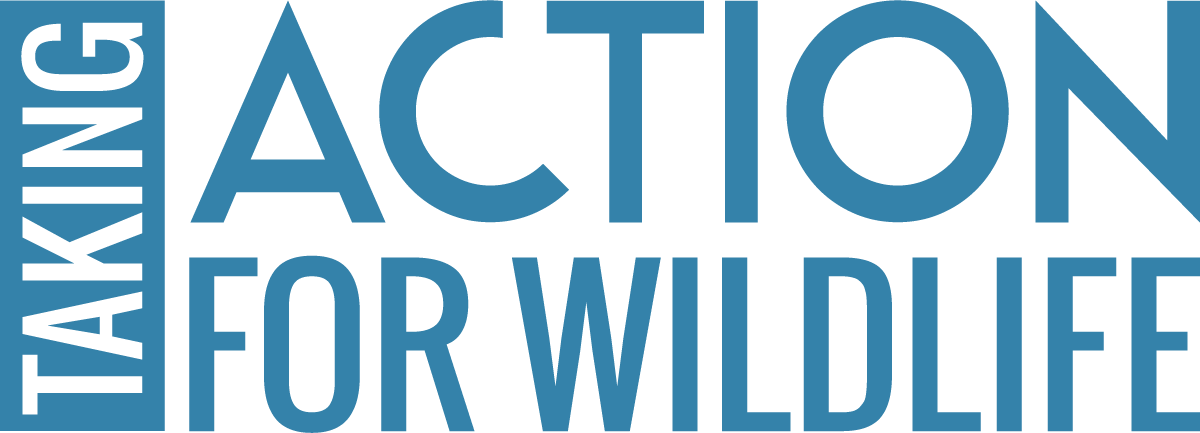Teaming Up for Turtles
Big things can happen for wildlife when dedicated volunteers team up with biologists around the state. This is what happened in the town of Newmarket with a critical call-to-action for motorists to be aware of rare turtles attempting to cross roads. In late May and June each year, female turtles of every species must make their way to open, sandy areas to lay their eggs. This journey can be perilous – especially when generations of turtles have made the same trek year after year, even before there were roads, houses, and other dangerous obstacles between themselves and their preferred nesting area.
The recently updated Wildlife Action Plan identifies road mortality as the leading threat to Blanding’s turtles (state-endangered), spotted turtles (state-threatened), wood turtles (species of Special Concern), eastern box turtles (species of greatest conservation need), and the remaining three common turtle species that exist here in New Hampshire – snapping, painted, and musk. A turtle’s shell is tough, made of bone and a layer of keratin, but is still no match for a vehicle tire.

This wetland full of aquatic vegetation can be home to rare Blanding’s and spotted turtles, as well as the more common snapping and painted turtles. NHFG photo.
Biologists from NH Fish & Game see the evidence of this first hand, when every spring reports start rolling in of turtles hit on roadways. As part of a region-wide study to identify populations of Blanding’s turtles and other wetland-dependent Species of Great Conservation Need, NH Fish & Game developed priority areas throughout the state to focus efforts on reducing road mortality. These are often areas where roads were built near occupied wetlands, where roads separated known nesting areas from suitable wetlands, or areas where undersized culverts cause turtles to come up and out of the water to cross roads.
The town of Newmarket Conservation Commission was seeing the evidence as well, where some of the town’s roads bisected wetland habitat. The town contacted NH Fish and Game about their concern for the turtles, and about their desire to construct turtle road-crossing signs in these areas. It was a perfect match. NH Fish & Game biologists were looking to do the same – so they provided the town with the information they had gathered on road-crossing hot spots through rare turtle areas. They matched up almost perfectly with where the town wanted to place their turtle-crossing signs!

Signs like the one pictured here are placed in known crossing areas to alert motorists that turtles may be attempting to cross the roadway. NHFG photo.
Because the targeted areas were high-priority crossing areas for endangered Blanding’s turtles, NH Fish & Game provided several turtle-crossing signs to the town free of charge. Volunteers with the Conservation Commission worked with their town road agents to place signs near the identified road crossing hot spots. The signs are only deployed during the active turtle season (spring and summer), in an effort to most effectively alert motorists and avoid what’s called “motorist fatigue” – when people drive by the same thing day after day and tend to ignore road signs.
An important next-step will be monitoring these areas for signs of road mortality of wildlife species. This action has inspired other nearby towns to look at how they can provide outreach about rare turtles and the serious threats they face in New Hampshire.

